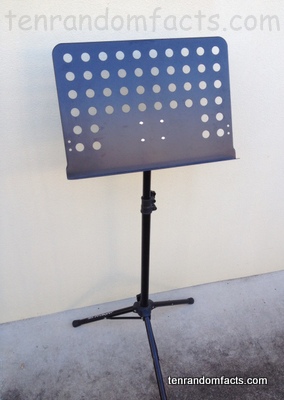Music stands were once an item of little importance, and now they are a musical necessity.
- Music stands are an invention used to hold music books or sheet music during a musical performance or practice.
- Most often music stands are made of a metal material, although they are occasionally made of plastic or wood.
- Music stands are commonly engineered with the ability to fold and collapse, particularly for compact storage or transport purposes.
- A music stand is typically a central pole with legs, with a flat rectangle shaped head at the top which holds the music, and the head may be a solid rectangle, or one that has gaps or holes and is possibly collapsible.
- Music stands range greatly in size, from small, portable versions used in marching bands, to larger versions reaching human height and used in orchestras.
- It is thought that music stands originated in 200 BC in Ancient China, although they were not commonly used until the 1300s by European musicians from Germany and Switzerland.
- Often a small shelf is part of the head of a music stand, which helps to hold the music on the stand and also allows for a pencil or other small items to rest there, while others have clips or other mechanisms to attach the music to the stand.
- Generally music stands used for professional purposes are coloured black in a matte finish so that they are inconspicuous during a performance, however stands can be coated with chrome, or painted in a glossy black colour, or other alternative.
- The column of a music stand is often adjustable in height, and the head is often tilted at an angle so the musician can view the music clearly and easily.
- Music stands are available in different versions, from lightweight ones often used by amateurs, to heavy duty sturdy ones that are typically used by professionals and are able to hold heavy books.





